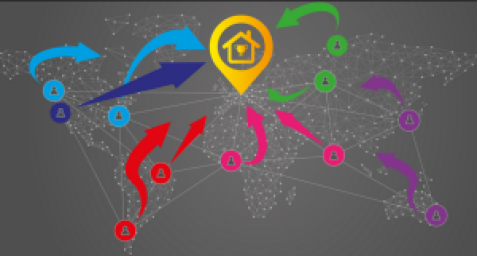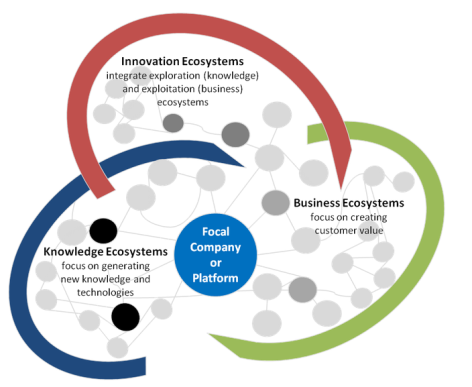
I have struggled to get my head around the effect of ecosystems within the healthcare system; it is so complex.
In recent weeks, I have recognized the barriers and opportunities around the challenges of building ecosystems for health services to deliver real change within our healthcare and its management.
To help me, I have found some excellent observations to gain this deeper appreciation of the complexities involved. The links are shown at the bottom of this post.
This is my opening summary to relate my understanding of how ecosystem designs might help change this vital sector of our economies.
The first starting point is that the patient themselves have to become the centre of any future healthcare system, based on ecosystem solutions. Why? Firstly, the patient or customer will increasingly be demanding and expecting personalized treatment and want to be able to shop around to achieve this. Secondly, they are expecting and wanting to be part of a controlled method and choose advice and care delivery more than ever. Thirdly, they will shop for quality and cost as the cost models will increasingly look for this personalization to determine the premiums. The final customer will be central to drive the change, and the providers of ‘services’ keen to reposition themselves as responsive to this ‘need.’
 It had to come to this eventually. The emergence of Blockchain and distributed ledger systems illustrates how innovation is moving from focus on products and services, which are interesting but don’t provide a long-lasting competitive advantage, to a focus on platforms and ecosystems.
It had to come to this eventually. The emergence of Blockchain and distributed ledger systems illustrates how innovation is moving from focus on products and services, which are interesting but don’t provide a long-lasting competitive advantage, to a focus on platforms and ecosystems.
 Our experiences determine to a large degree, success or failure. When you are reliant on others to collaborate and exchange knowledge, for the better good, you need to make sure there is a consistent validation process.
Our experiences determine to a large degree, success or failure. When you are reliant on others to collaborate and exchange knowledge, for the better good, you need to make sure there is a consistent validation process. Jeffrey wrote a recent post “
Jeffrey wrote a recent post “
 There is a new set of battlegrounds brewing around platforms and ecosystems and what and who controls the data and the flows needed to build these thriving environments, reliant on the cloud.
There is a new set of battlegrounds brewing around platforms and ecosystems and what and who controls the data and the flows needed to build these thriving environments, reliant on the cloud.

 So what is the difference between a fog and a cloud? Well, actually bandwidth is part of the answer and where data needs to be situated.
So what is the difference between a fog and a cloud? Well, actually bandwidth is part of the answer and where data needs to be situated.